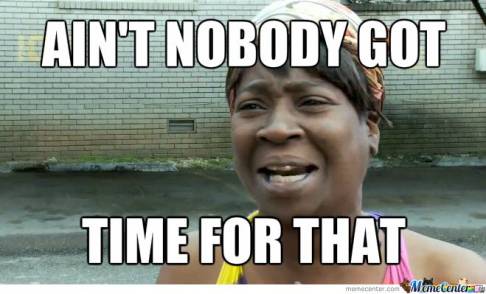Do You Have Any Website Plans?
Even if your site is a few (or several!) years old, it’s never too late to make some website plans.
When I was first getting around to creating my own website, I had no real direction or ideas. I just knew: hey, you need a website!
And so, Adventures in Career Changing was born.
But I have found that my site suffers from a lack of basic strategic planning. And so, here I am, to help you out and have you learn from my mistakes.
Because God knows I’ve made enough of them for both of us.
Templates and Advice
Dang, I wish this stuff was around when I was first tinkering around.
GoDaddy provides a very good framework for a website. But it is also rather basic. Although that makes sense. After all, GoDaddy exists for pretty much any type of website building. Novice or pro, GoDaddy wants to serve them all. Hence the planning info is sparse and generic.
It also (and I know this from personal experience) does not help if you are unsure about your site’s purpose, or it just plain changes. Since I didn’t want to start over from scratch, Adventures has changed with me.
But here are some ideas of my own. Take them or leave them, as always.
My Ideas of Website Plans and the Like
It may be hard to initially decide what you want a website to be about. Or maybe someone told you, “You’ve gotta have a website.”
So, if things are that vague, go contrary, and try to figure out what you don’t want your site to be about.
Because for me, that has stuck. One thing I have never wanted this site to be was/is purely a storefront. Now, I wouldn’t mind selling a bit through here. But this isn’t the website for the Stop ‘N Shop.
Personally, I am perfectly happy selling (or at least trying to…) through bigger sites like Amazon or Smashwords. Let them have the headaches of collecting sales tax and dealing with disgruntled customers and returns.
Separating Blogs from Sales
But then there’s the other side of the things, the pure blog site. Of course, there is absolutely nothing wrong with that. This site has been just like that, and often for years at a stretch. This was particularly the case when I was in grad school.
But one thing about hosting, whether it’s via GoDaddy or elsewhere, is that it’s kind of expensive. If you don’t want to do anything but post, owning your own domain is likely to be overkill.
Why not just use Medium or Substack (although you can build a readership through them) or Tumblr? Or maybe just post at a forum or talk on Facebook?
Unless you’re writing stuff that’s controversial or likely to be yanked by a moderator (think NSFW stuff), you. Don’t. Have. To. Own. Your. Own. Domain.
At least, not to start.
A Happy Mixture of Website Plans
I like having both, and I feel there’s plenty of space in here for both. For any sites which publish thought leadership, that is exactly how they’re put together.
Well, now that that’s settled, what’s next?
Getting Into the Trees and Away From the Forest
Make a few decisions to start with. And do yourself an enormous favor from the beginning! Operate under the assumption that you will have less time, energy, money, and creativity, than you think you will.
This means that you should sit down from the very beginning and write out a bare bones skeleton covering whatever the heck it is that you want to write about.
Here’s an example.
Let’s say that your blog/site are going to be about dog training. Stake out your real estate, and decide where the fence is around your property. That is, decide if, say, food is outside of scope, but collars aren’t.
Whatever it is, make some choices. And don’t worry if you’re shutting yourself out! Keep a note about those extras and set that note aside for the time being. Why? Because limits can help to spur creativity and knock out writer’s block. But don’t throw that stuff out entirely. You may want it later.
Hence for our dog training blog, we might grab some old-fashioned paper and write down some ideas.
† Breeds
• Ages
† Rescues
• Strays
† Dogs with disabilities
• Collar types
† Leashes
• Kids and dogs
† Dogs and cats
• The two- or three-dog household
† Apartment living
• Legislation
Twelve ideas is great to start out! Now, let’s divvy them up. And keep in mind that an idea can come under more than one topic.
What the Dog is Like
The following ideas fit this category well:
† Breeds
• Ages
† Rescues
• Strays
† Dogs with disabilities
The Household
These ideas fit into this category:
• Kids and dogs
† Dogs and cats
• The two- or three-dog household
† Apartment living
Apparel/Training Tools
Here, the ideas that fit best are:
• Collar types
† Leashes
Dealing With Non-Owners
That is, dealing with people who might not love your fluffy hound as much as you do. Here, the ideas that fit are:
• Kids and dogs
† Dogs and cats
• Apartment living
† Legislation
This doesn’t mean the other ideas can’t fit. But on the surface, these work the best. So, out of our initial twelve ideas, we actually have fifteen ideas, in four separate sections. Sections are helpful because they add coherence to a site. You can make a series out of them.
For example, your series for apparel and training tools might look something like this.
• Prong collars—are they cruel?
† The best collars when you’re on a budget
• Are retractable leashes safe? An expert’s opinion
† How to get your puppy to walk on a leash
• Getting your children used to walking the dog on a leash
† Leash laws—an opinion
• Halloween costumes? Good idea, or not?
† Canine style: from bandannas to booties
These posts are divisible into collars, leashes, and clothing. The Halloween costume post is obviously great for late October.
Make Your Chief Website Plans to Capture and Grind Your Topics Into the Dust
Essentially what you want to do is, take your ideas and run with them forever. Run them into the ground, even. Now, while no one wants to read a post on getting a four-year-old child to walk a dog on a leash and then a post about a five-year-old doing the same thing, there’s no reason why you can’t make those divisions a bit wider.
Maybe something on teenagers and dogs and responsibility, or teaching your preschooler how to properly walk your dog.
From our initial twelve ideas, we now have over twice that amount. And I’ve only really gone down one alley, the one with kids and dogs and leashes. Much like running a maze, run these alleys down. And, once you’ve finally hit a brick wall, turn around and run down the next alley.
Brainstorm and Brainstorm, and then Brainstorm Some More
Let’s say you take a trip into your local city or town, and you see someone carrying around a small dog in a purse. Aha! There’s a new idea, how to get a dog to enjoy being carried around in a purse. That might lead you to ideas about crate training or dog beds, too.
You’ve got a phone, right? So send yourself your ideas or use the notes app. If you’re driving, then of course either pull over or use voice recognition.
Ideas are everywhere. You just have to be looking for them, and then documenting them.
Make a Schedule
How often do you want to post? Or, rather, how often do you think you will want to post when you’re tired and burned out, and a few years have gone by?
Seven days a week is superfluous and really impossible to keep up with unless you have an army of helpers at the ready. So, aim for more like one to three times per week or so.
This blog, for example, is now down to Tuesdays and Thursdays only. I like this schedule as it’s easy to follow and remember.
Get Ahead
Remember what I said about not having time or energy or mental bandwidth? Getting ahead helps with that tremendously. When you have the time and the creativity and the will, go for it. There is no need whatsoever to stop after you have written one post. Maybe you have the time to write two—or five, even.
Remember what I said about a series of posts? If you have a few in the kitty, you can make choices about how a series can go.
Your Website Plans Should ALWAYS Include SEO/Keyword Research
I have written about SEO before, so I will not get too deep into it right now. But suffice it to say, if you are considering writing about, say, German Shepherds, do some keyword research. The best phrase might be German shepherd dog rather than just German shepherd.
Set Up Metrics as Soon as You Can
Use Google, whatever they are calling their analytical tools these days (GA Four? I don’t know). Claim your site and decide on what your goals are. Your goal might be a certain number of readers or a certain amount of time on page. Or it might be a number of pages visited in a session.
If you’re selling stuff, then one of your goals should be centered around sales, of course.
Lather, Rinse, Repeat With Your Website Plans
If you find that you get the most engagement with posts about chihuahuas, then write about them more often. If your opinion posts are less likely to lead to sales, write fewer of them, and spread them out, away from each other more.
Also, keep testing, over and over again. Maybe your post on Halloween costumes ends up being a massive hit. Well, Halloween only comes once a year. But there’s no reason why you can’t write about canine costumes for holidays like Christmas or Purim. Approach it from other angles if you can, so post an interview with a costume maker if you can.
Like I said, follow every idea to oblivion. And if you finally really do run out of ideas, update and rerun your older posts. Also, revisit those ideas you set aside as being out of scope. Maybe it’s time to extend your fence and put them in scope.
And finally, have fun with your website plans.
Woof!
Website plans show you how to blog for years if not forever!
Leave a Comment








You must be logged in to post a comment.